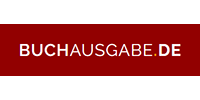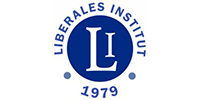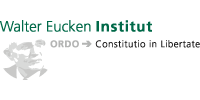3rd Prize in VSP 2023: The Rule of Law. Its Meaning and Purpose.
Harmonizing Chaos: The Role of Rule of Law in Fostering Spontaneous Order
Vibhu Vikramaditya
ABSTRACT
The Law and Economics Revolution in the latter half of the 20th Century, part of a broader pushback against the failures of general equilibrium economics and the planned economies based on it, has crucially underscored the importance of property rights and the rule of law. This essay delves into this ideological shift, critically re-evaluating its traditional conceptions of these concepts in the context of economic coordination and societal order. We challenge the conventional understanding of private property as merely a legal construct, a byproduct of legislative action aimed at transaction cost minimization and efficiency allocation, and argue that
private property rights and the rule of law are not merely legal constructs imposed from above, but emergent phenomena arising from social interactions and rule-following behaviors of individuals. Central to this examination is a shift in understanding property rights and the rule of law: from static, legally defined entities to dynamic, emergent outcomes of complex social interactions.
The concept of the rule of law is reexamined as a spontaneously developed order, reliant on the general confidence in abstract rules formed through consistent individual actions over time. We lay stress on recognizing that government interventions cannot unilaterally establish the rule of law or effective property rights, using empirical evidence from the Roosevelt administration’s policies during the Great Depression we highlight how top-down approaches by disrupting established practices and eroding the necessary confidence for economic stability and coordination cause paralysis in economic action and coordination. The discussion emphasizes the
organic, bottom-up development of property rights as dynamic social conventions, shaped by societal norms and collective learning processes.
Introduction
The Industrial Revolution starting in the late 18th and 19th Centuries remains a watershed moment in the history of the world as it made it possible for the mass of the entire populace to escape the cruel Malthusian trap for the first time. It brought about significant social mobility in populations and Liberal political changes that grew to touch most of the globe. Adam Smith(1776) in his magnum opus, written at the dawn of the Industrial Revolution sketched a sublime social picture of a commercial world where opposing and even conflicting interests in society could be reconciled harmoniously benefiting all the involved parties. His insight into wages and prices adjusting to changes in demand and supply and gravitating around the natural level was subsequently developed in a rigorous manner during the Marginal Revolution by Menger(1871), Walras(1874), and Jevons(1862). The crucial break brought about by the Marginal revolution was an end to the objective cost theory of value by a subjective theory of value which crucially explained the emergence and source of value in Individual actions and valuations.
As These insights were mathematically formalized and carried forward by the next generation of economists, Edgeworth (1886), Pareto(1896), Barone (1908), Lange(1936, 1944), and others in the 20th Century building mainly on the system of simultaneous clearing equations of Walras, which preserved the idea of Adam Smith’s invisible hand in the real economy allocating resources efficiently but in a manner more by assumption and mathematical implication of the tatonnement process in perfectly competitive markets than empirical explanation or description.
The seemingly subtle difference in the manner of stating the phenomenon in competitive markets however had significant implications for the development of economic and political ideas. The use of mathematics in establishing general principles of market clearing behavior was quite significant as its results were general in nature irrespective of the institutional and cultural context in which markets are embedded and thus could be discarded or shaped constructively in a rationalist manner without affecting market behavior. This sentiment was most strongly advocated amongst market socialists like Lange(1936), who advocated the superiority of a neoclassical model of socialism over private property-based markets and emergent prices, in which planners set prices and subsequently allow markets to adjust these prices through a trial-and-error process.
The theoretical foundations laid by Lange and others in advocating for market socialism nonetheless were not without criticism, Mises, in “Socialism: An Economic and Sociological Analysis” (1922), articulated a profound challenge to the feasibility of socialism. Mises contended that without private property and money which together create a market-based price system, socialist economies would be incapable of rational economic calculation, leading to inefficiencies and resource misallocation. This argument, known as the “economic calculation problem,” remains a pivotal critique as examined by Lavoie (1985) in debates regarding market socialism and central planning. The debate was further enriched by Hayek’s insights on spontaneous and complex order. in his seminal work “The Use of Knowledge in Society” (1945), Hayek asked the fundamental question about the availability and distribution of knowledge in a complex economy and delved into the limitations of centralized economic systems in effectively utilizing depressed knowledge.
He pointed out that the crucial economic problem of society is not merely allocating given resources but rather discovering the prices and allocations that can only emerge from decentralized decision-making. This process, he asserted, is facilitated by the price system in a market economy, which effectively aggregates and utilizes local and specific knowledge that is otherwise inaccessible to a central planner, all without a central directing force. Hayek(1948) further elaborates on the notion of complex orders, he emphasizes that economic and social systems are characterized by a complex network of interdependencies that are inherently beyond the comprehension and control of any central authority. He argues that this complexity arises from the dispersed nature of information and knowledge among individuals.
Each individual possesses unique and localized knowledge, which, when combined with market interactions, leads to the efficient allocation of resources and the emergence of a coherent economic order.
Later in “Law, Legislation and Liberty” (1973), he extensively explores the concept of the spontaneous nature of the rule of law and sheds light on the organic development of legal norms and the role of individual actions in shaping societal rules. He differentiates between ‘law’ and ‘legislation’, highlighting that much of the legal system, particularly the rule of law, emerge spontaneously and is not the product of deliberate design. He argues that the law evolves through a gradual process of social evolution, where legal norms and principles develop organically from repeated interactions and shared experiences of individuals within a society. This process, according to Hayek, parallels the market mechanism in economic theory, where order emerges not from centralized planning but from the aggregate of individual actions and decisions.
The Law and Economics revolution, a pivotal movement in the latter half of the 20th century, intended as a pushback against the neo-classical isolated markets and significantly reshaped the understanding of legal structures and underscored their importance within economic frameworks, especially the role of institutions in fostering economic efficiency. Central to this revolution was the clarification of the role of private property and its incentive mechanisms. However, a critical
analysis reveals that this movement has not fully addressed the phenomenon of coordination within the context of spontaneous order, It has in particular failed to provide an adequate explanation of the importance of the rule of law in coordinating the voluntary plans of individuals across space and time. It assumes special significance when we try to escape the timeless perpetual motion of a general equilibrium economy towards examining real-world scenarios where investment plans tend to break down or not emerge at all. Additionally, in situations where economic coordination becomes paralyzed due to failures in the rule of law.
The Law and Economics Revolution Reconsidered
The Law and Economics revolution, a seminal shift that occurred during the second half of the 20th Century, marked a departure from neoclassical formalism towards a more intricate examination of the interplay between legal structures, institutions, and economic phenomena.
Central figures in this movement, such as Ronald Coase, Richard Posner, Harold Demsetz, and Oliver Williamson amongst several others, have contributed foundational theories focusing on the roles of property rights, incentives, and institutional frameworks. However, these contributions, while pioneering, exhibit notable limitations in addressing the broader aspects of economic coordination, particularly within the context of spontaneous order and the rule of law. Ronald Coase’s work, particularly in “The Nature of the Firm” (1937) and “The Problem of Social Cost” (1960), laid the groundwork for the Law and Economics movement. In “The Nature of the Firm,” Coase challenged traditional economic models that took the existence of firms as given and asked why firms exist as distinct entities within the market in the first place. He
explained that transactions on the market and economic coordination amongst entities are not costless and firms as institutions arise to economize on these costs.
Williamson (1998) argues that Coase’s work provided the theoretical foundation for NIE by directing the development of the concept of transaction costs and highlighting the importance of institutional arrangements in reducing transaction costs. Building on Coase’s work, Williamson argues that NIE represents a shift away from traditional economic analysis, which assumes that markets are inherently efficient and that economic actors are rational and self-interested. Instead, NIE recognizes that transaction costs can impede the efficient functioning of markets and that institutional arrangements can play a crucial role in reducing transaction costs. Williamson (1975) analyzed the conditions under which transactions are best managed within firms or markets. He introduced the notions of bounded rationality and opportunism, emphasizing the role of institutional arrangements in managing transaction costs.
While illuminating, his work tends to focus more on efficiency within organizations and less on the broader legal frameworks that enable spontaneous and dynamic market coordination. Similarly, Williamson(1985) expanded on how economic institutions, including legal frameworks, adapt to transaction costs and uncertainties however, like his earlier work, it largely overlooks the role of legal systems in facilitating broader societal coordination. This rigid shared conception about the role of transaction cost as having primary importance in economic exchanges, where the role of institutions is primarily of minimizing transaction costs in exchanges creates multiple problematic elements that limit our theoretical analysis of problems in social exchange inloving coordination amongst independent elements in markets, dynamically interacting with and shape market processes.
Coase’s (1960) paper, “The Problem of Social Cost,” stands as a landmark in the field of Law and Economics, fundamentally shifting the discourse on property rights and externalities. He presents a nuanced argument about the role of transaction costs in the allocation of property rights. Along with challenging the traditional Pigouvian view that government intervention is always required to correct externalities, he argued that under certain conditions (specifically, when transaction
costs are low and property rights are well-defined), parties can negotiate to internalize externalities. This negotiation process, he posits, can lead to efficient outcomes irrespective of the initial allocation of property rights.
Demsetz, and extends Coase’s line of thought in terms of the ability of civil society and its self-organizing nature, to highlight the role of property rights in fostering economic efficiency. Demsetz (1967) argued that property rights evolve and develop to internalize externalities until the gains from internalization become larger than the cost of internalization. This, in essence, is a reflection and advancement of Coase’s perspectives on the role of property rights as primarily driving efficiency in allocative mechanisms. The problematic tenets in these treatments of the problem and the conception of property rights in general as transaction cost minimizers or efficiency allocation mechanisms lie in them being perceived as given “letter of the law” phenomenon that if the government or an overarching authority institutes through legislation or statute would lead individuals at any time to readily use and serve as the basis of expectations in their decision-making process, instead of as an emergent characteristic of social relations that arises in social exchanges and in certain environments due to rule following characteristics of individuals while in pursuit of their own individual plans. These rules constitute the liability rules that individuals learn in their interactions within the market and social life, which in turn leads them individually and socially to form just rules of conduct that in turn curtail the domain of economic and social activities that individuals engage in. Property rights in this respect are social rules and conventions acquired over time through repetitive imitation or learning.
Expectations, Rule Following, and Economic Coordination
The discussions surrounding the rule of law in new institutional economics involve creating the “institutional environment” as the rules of the game and effectively implementing those rules. However, as Hayek(1973) notes the institutional environment is itself an organically grown spontaneous order composed of multiple interdependent but independently acting parts, and therefore the rules of the game that must be discovered and its implementation for the effective
maintenance of the Order through correspondence of expectations regarding actions must take place endogenously. This implies an effective break with the idea of property rights and by extensions of the rules surrounding their use as incapable of being imposed exogenously in line with desired outcomes.
Hayek(1973) describes order as, “a state of affairs in which a multiplicity of elements of various kinds are so related to each other that we may learn from our acquaintance with some spatial or temporal part of the whole to form correct expectations concerning the rest, or at least expectations which have a good chance of proving correct” and sets the foundation stone of an inquiry into the phenomenon of the rule of law. Property rights viewed in the perspective of an order is essentially a relation between interacting individuals with an agreement over some abstract rules surrounding their interactions. The following of abstract rules which lead to the
emergence of property rights are aided by their concrete formalization through legislation or statutes but shouldn’t be conflated altogether as the source of their genesis.
Economic coordination amongst millions of dispersed and independently acting individuals becomes possible and manages to create an Order only due to following certain abstract rules by the vast majority of involved participants over an extended period of time wherein they become conscious of and begin to form expectations actively regarding the results of their own as well as other people’s actions. Repetition and consistency in outcomes pertaining to people’s behavior play a crucial role in the ordering process and give rise to the phenomenon of the Rule of law as a state of general confidence in the abstract rules by individuals who have acquired a set of
beliefs and expectations during pursuit of their own plans in a given order. While the legislature or executive bodies cannot bring about directly this state of general
confidence in abstract rules in circumstances where they haven’t been effectively learned and acquired by the participative population, they can through constructive fiat upset an established state of order and bring about a sustained period of paralysis in economic actions and coordination.
The experience of business owners, investors, and entrepreneurs in the American economy at the hands of the Roosevelt administration in the midst of the great depression serves as a concrete example of how breaking established practices and conventions that had for long created and maintained a general state of confidence in the prevalence of the rule of law within the legal jurisdiction of the United States led to sustained periods of depressed output and investments. It
created what Higgs (1997) describes as “regime uncertainty,” a state where the business community in general lost confidence in the predictability and stability of the government’s economic policies, and as a result, couldn’t form coherent and coordinated expectations regarding the economic future. This uncertainty was rooted in a series of interventions by the Roosevelt administration, including the National Industrial Recovery Act (NIRA) of 1933 and the Agricultural Adjustment Act (AAA). These interventions introducing unprecedented levels of government control and regulation in the economy were radical departures from previous laissez-faire policies established over generations after generations in refraining from directly controlling business or the economy.
The NIRA, for instance, brought about sweeping changes by establishing codes of fair competition and allowing the government to intervene in wage and price settings in industries. According to Cole and Ohanian (2004), these codes disrupted normal market functions and kept wages and prices artificially high, prolonging the Depression. Additionally, the AAA, which aimed at reducing agricultural production to raise prices, resulted in increased uncertainty among farmers and investors in the agricultural sector. These interventions at first paralyzed economic actions through departure from an established set of beliefs and practices that had been successfully acquired and inherited by the vast majority of the interacting populace and then hindered the reconfiguration of economic order given the lack of abstract rules guiding behavior.
Conclusion
In synthesizing and navigating the complex path of ideological change from Adam Smith to the modern Law and economics revolution, The relationship between private property, the rule of law, and economic coordination has grown in vital importance, yet their dominant conceptions remain lacking in essence as understood within a complex phenomenon framework. Private property, as understood in the context of transaction cost minimization and efficiency allocation, is traditionally seen as a legal construct, a product of legislative action, and statutory law. This conventional view suggests that property rights, once legislated, provide a stable foundation for economic transactions and decision-making processes.
However, this perspective overlooks the deeper, more nuanced origin of private property rights. As explored in this discussion, private property is more accurately characterized as an emergent feature of social relations, evolving through social exchanges and the rule-following tendencies of individuals. These property rights are not static entities bestowed by government decree but are dynamic, shaped by social norms, repeated interactions, and the learning processes of individuals within a market and societal context. This emergent nature of property rights highlights their role as social rules and conventions, continuously evolving through imitation and collective learning. The rule of law extends beyond the mere existence of laws and regulations. It represents a broader concept of a predictable and stable order, essential for economic coordination among a multitude of independent actors. The conception of the rule of law, as arising out of discussions on Spontaneous order by Hayek, is not merely a set of imposed rules but a spontaneously developed order, a state of general confidence in abstract rules that emerges from the repeated
and consistent actions of individuals. This confidence is vital for forming expectations about the actions of others, thereby facilitating economic coordination and cooperation.
The distinction between these two conceptions of private property and the rule of law is crucial for understanding economic dynamics and the role of government. The fact that private property rights emerge from the bottom-up, as a product of social interactions due to following abstract rules, implies government actions cannot create the rule of law in a vacuum; Misguided governmental interventions, as seen in the examples of the Roosevelt administration’s policies during the Great Depression, can disrupt established practices and erode the confidence necessary for the rule of law, leading to economic paralysis and uncertainty.
Vibhu Vikramaditya is an economics scholar with research interests in capital theory, monetary theory, and business cycles. who writes about events in the economy from a legal and economic standpoint and believes that safeguarding the liberty of each individual and its rights is the most important act toward peace, prosperity, and growth.
References
Smith, A. (1776). “An Inquiry into the Nature and Causes of the Wealth of Nations.”
Menger, C. (1871). “Principles of Economics.”
Walras, L. (1874). “Elements of Pure Economics.”
Jevons, W. S. (1862). “The Theory of Political Economy.”
Edgeworth, F. Y. (1886). “Mathematical Psychics.”
Pareto, V. (1896). “Manual of Political Economy.”
Barone, E. (1908). “The Ministry of Production in the Collectivist State.”
Lange, O. (1936, 1944). “On the Economic Theory of Socialism.”
Mises, L. (1922). “Socialism: An Economic and Sociological Analysis.”
Lavoie, D. (1985). “Rivalry and Central Planning: The Socialist Calculation Debate
Reconsidered.”
Hayek, F. A. (1945). “The Use of Knowledge in Society,” American Economic Review.
Hayek, F. A. (1948). “Individualism and Economic Order.”
Hayek, F. A. (1973). “Law, Legislation and Liberty.”
Coase, R. (1937). “The Nature of the Firm,” Economica.
Coase, R. (1960). “The Problem of Social Cost,” Journal of Law and Economics.
Williamson, O. E. (1975). “Markets and Hierarchies: Analysis and Antitrust Implications.”
Williamson, O. E. (1985). “The Economic Institutions of Capitalism.”
Demsetz, H. (1967). “Toward a Theory of Property Rights.”
Cole, H. L., & Ohanian, L. E. (2004). “New Deal Policies and the Persistence of the Great
Depression: A General Equilibrium Analysis.”
Higgs, R. (1997). “Regime Uncertainty: Why the Great Depression Lasted So Long and Why
Prosperity Resumed after the War.” Independent Review.
Oll and Friedrich A. von Hayek. “Kinds of Order in Society ” ( 1964 ).































